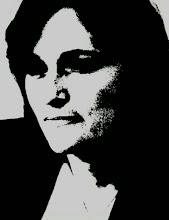More from Mastering Multimedia (loving this blog at the moment), this time top tips on making better audio slide shows.
- I shoot the photographs for my slideshow like I shoot a video sequence–by taking wide, medium and lots of tight shots. This gives my shows visual variety and allows me to cover my audio by opening with a wide shot, then transitioning to a tight shot of the same scene.
- It’s best to open your show with a bit of natural sound rather than with a subject talking. The ramp up into your story is important. If you don’t pull the viewer in fast they will bolt. Natural sound eases the viewer into your story without jolting them with dialogue.
- Stop having the subjects introduce themselves. Really, stop it! The biggest cliché in audio slideshows is the “Hi, my name is…” intro. Instead, use a lower thirds title.
- Use passionate subjects for the narrative of your story. If your subject has a boring monotone voice, then maybe you should write and voice some narrative bridges yourself to help move the story along.
- Like video, try to match up photos to what the narrator is talking about. The same goes for the natural sound. When you do this, your story will really start to crackle.
- Get yourself a decent flash card recorder. The cheap one makes your show sound amateurish. You use a $3000.00 digital camera to shoot the pictures. A $200.00 recorder is a small price to pay for decent sound quality.
- When you record an interview, make sure to do it in a quiet spot. Then add your natural sounds (at a reduced level) under the narrative to give it sound depth.
- Record a minute of room tone wherever you are taking photographs. Use it to cover the sound gaps between or under the narration.
- Never, I mean NEVER have dead air sound gaps in your audio narrative. Cross-fade your audio between clips or add room tone to prevent this at all costs.
- Your final audio edit should be as smooth as butter. Nothing should take you out of the moment.
- Make sure your show is paced correctly. Too fast and you make the viewer mad, too slow and you bore them visually.
- Use music for a reason, and not because you need to make a boring show more interesting. Don’t use music to manipulate emotion. If it is not in the narrative or photos, don’t force it with music.
- Finally, create what I call a nat/narrative weave with your audio edits. Start your show with natural sound, and then weave your narration and ambient sound in and out.
